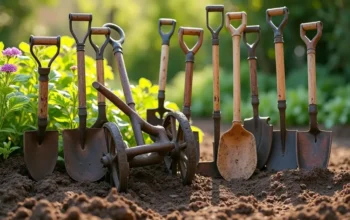Choosing the Right Wedding Marquee Style for Your Venue and Vision
Wedding marquees come in more varieties than most couples realize when they first start planning. What seems like a simple “tent rental” decision quickly becomes a maze of options – traditional pole marquees, clear span structures, stretch tents, and hybrid designs that each work better in different situations.
The marquee style you choose affects everything from your guest experience to your wedding photos to how much you’ll spend on heating and lighting. Get it right, and your outdoor wedding feels magical. Get it wrong, and you’re dealing with sight line problems, weather issues, or a space that just doesn’t feel quite right for your vision.
Most couples start with Pinterest images of gorgeous marquee weddings without understanding the practical differences between styles. But the marquee that looks perfect in photos might be completely wrong for your specific venue, guest count, or weather conditions.
Traditional Pole Marquees: Classic but Complicated
Traditional pole marquees create that classic wedding tent look with peaked rooflines and guy ropes stretching out from the structure. They work beautifully for rustic or countryside weddings where the traditional aesthetic fits the overall vibe.
The main appeal is visual – these marquees photograph beautifully and create dramatic interior spaces with high peaked ceilings. The traditional canvas material and rope details add authentic charm that fits perfectly with vintage or country-style weddings.
But here’s what catches couples off guard: pole marquees need significant space around them for the guy ropes and stakes. If your venue has limited space or restrictions about where you can stake into the ground, traditional marquees might not work at all.
The poles also create sight line issues inside. Depending on your layout, some guests might have their view of the ceremony or speeches blocked by structural poles. This becomes more problematic with larger guest counts where you need multiple poles for structural support.
Weather sensitivity is another consideration. Traditional canvas offers good rain protection but can feel quite closed off on hot days since they don’t offer the same ventilation options as more modern designs.
Clear Span Marquees: Maximum Flexibility
Clear span marquees eliminate internal poles entirely, creating completely open interior spaces where you can arrange seating and decor however you want. This style has become increasingly popular because it solves most of the practical problems that traditional marquees create.
The structural framework sits entirely around the perimeter of the marquee, leaving the interior completely flexible. You can position your ceremony, dining, and dancing areas exactly where they work best without working around poles or structural limitations.
This flexibility extends to your vendor setup too. Caterers, photographers, and entertainers can work more efficiently in clear span spaces because they’re not navigating around poles or dealing with awkward corners where traditional marquees connect to extensions.
Clear span marquees also offer better options for climate control. The open interior space allows for more effective heating and cooling, and many designs can incorporate more windows or open sides for natural ventilation on pleasant days.
The tradeoff is usually cost – clear span structures typically run more expensive than traditional marquees because they require more sophisticated engineering and materials. But many couples find the added flexibility worth the investment.
Stretch Tents: Modern and Adaptable
Stretch tents represent a more modern approach to marquee design, using flexible materials that can be configured into various shapes and heights. They work particularly well for couples wanting something that feels less formal than traditional marquee options.
The sculptural quality of stretch tents creates interesting visual effects with flowing lines and organic shapes that photograph beautifully. They can be configured to work with irregular venues or to create multiple connected spaces with different ceiling heights and atmospheres.
Stretch tents also tend to feel more connected to their surroundings than enclosed marquee styles. The flowing materials and ability to leave some sides partially open create a better indoor-outdoor flow that many couples prefer for garden or countryside weddings.
Weather protection varies significantly depending on the configuration. Stretch tents can provide excellent rain protection when properly setup, but they’re generally less suitable for cold weather events since they’re harder to fully enclose and heat effectively.
For couples planning comprehensive wedding experiences, services like Wedding Marquee Hire provide guidance on matching marquee styles to specific venue conditions and wedding visions, helping navigate these technical considerations.
Matching Style to Your Venue Conditions
Your venue characteristics should heavily influence your marquee choice. Flat, open spaces with good access work well for any marquee style, but venues with slopes, trees, or space constraints require more careful selection.
Sloped venues often work better with clear span or stretch tent options that can accommodate uneven ground more easily than traditional pole marquees. Trees and landscaping features can actually enhance stretch tent installations but might create complications for marquees that need guy ropes extending in all directions.
Access for setup and breakdown matters more than most couples consider. Traditional marquees generally require less complex installation equipment, while clear span structures often need larger vehicles and more setup space for the installation process.
Ground conditions affect different marquee styles differently. Hard surfaces might limit your options for traditional pole marquees that rely on ground stakes, while clear span marquees can often work with weighted bases or alternative anchoring systems.
Weather Considerations by Season
Summer weddings have different marquee requirements than spring or autumn celebrations. Hot weather makes ventilation and cooling crucial, which might favor clear span designs with better air circulation options or stretch tents that can remain partially open.
Spring and autumn weather variability requires marquees that can adapt to changing conditions throughout the day. Clear span marquees with removable wall panels offer good flexibility for dealing with unpredictable weather.
Winter marquee weddings need structures that can be effectively heated and fully enclosed. Traditional marquees with solid walls often work better for cold weather events than stretch tents that are harder to seal and heat.
Wind exposure at your venue also affects marquee selection. Some locations that seem perfect for outdoor weddings become quite windy, requiring more robust structural designs that can handle gusty conditions safely.
Budget Reality Check
Marquee costs vary significantly between styles, but the base rental is just part of your total marquee investment. Heating, lighting, flooring, and interior decor costs can easily double the initial marquee rental price.
Traditional pole marquees typically offer the lowest base rental costs but might require more spending on interior lighting and decor to create the atmosphere you want. Clear span marquees cost more initially but often need less additional investment to look complete.
Stretch tents fall somewhere in the middle for base costs but can require creative lighting solutions to achieve formal wedding atmospheres. The sculptural qualities that make them visually interesting can also make them challenging to decorate traditionally.
Hidden costs appear in different areas depending on marquee style. Traditional marquees might need additional ground preparation for stakes and guy ropes. Clear span marquees might require more sophisticated electrical planning for their larger open spaces.
Making Your Final Decision
The right marquee style depends on balancing your aesthetic vision, venue limitations, weather concerns, and budget realities. Perfect solutions rarely exist, but good solutions address your highest priorities while managing the inevitable compromises.
Start by identifying your non-negotiables – whether that’s visual aesthetics, weather protection, interior flexibility, or budget constraints. Then evaluate how different marquee styles perform against your priority list rather than trying to find the option that excels at everything.
Consider your guest experience throughout the decision process. The marquee that looks most impressive in photos might not provide the most comfortable environment for your celebration, while practical choices sometimes create better memories even if they’re less photogenic.
Remember that marquee weddings require more detailed planning than venue weddings, but they also offer more opportunities to create truly personalized celebrations. The right marquee style provides the foundation for your vision while handling the practical realities that make outdoor weddings successful.




